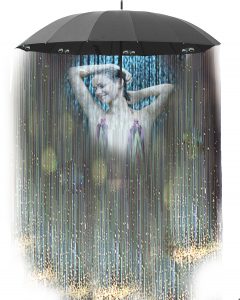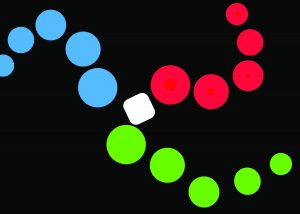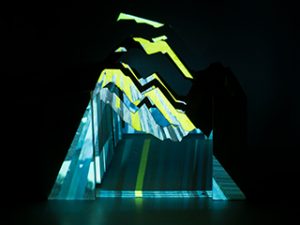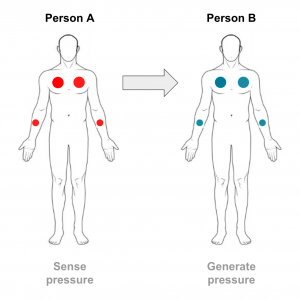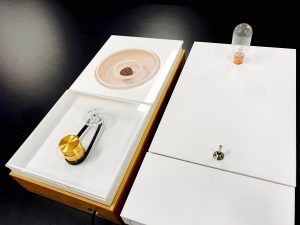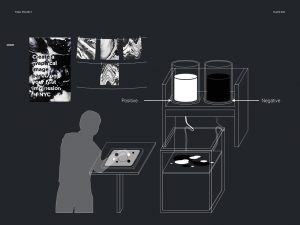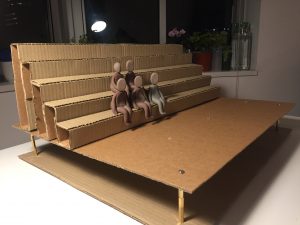Ji Young Chun
A visually pleasing lighting instrument in which people can dance under an umbrella and make musical sounds with their arm(hand)-stretching gestures like 'feeling the rain'.
http://www.jiyoungchun.com/2016/11/16/6-final/
Description
This piece is a visually pleasing musical instrument, called “Dancing in the Rain”.
I want to implement a simulation of ‘dancing in the rain’ under an umbrella. Audiences step into the umbrella, stretch their arm(hand) out to the edge of the umbrella like feeling rains, and make 8 musical sounds ‘do’, ‘re’, ‘mi’, ‘fa’, ‘sol’, ‘la’, ‘ti’, and ‘do’.
8 sections of the ribs of the umbrella will have one ultrasonic sensor each, which senses gestures, and creates beautiful raindrop sounds using p5 and changes color of the rain (optical fiber) of the section using neopixels on the edge of each fiber. The optical fiber stays white as a default, and changes color into rainbow based on gestures.
Classes
Introduction to Physical Computing ITPG-GT.2301.001

